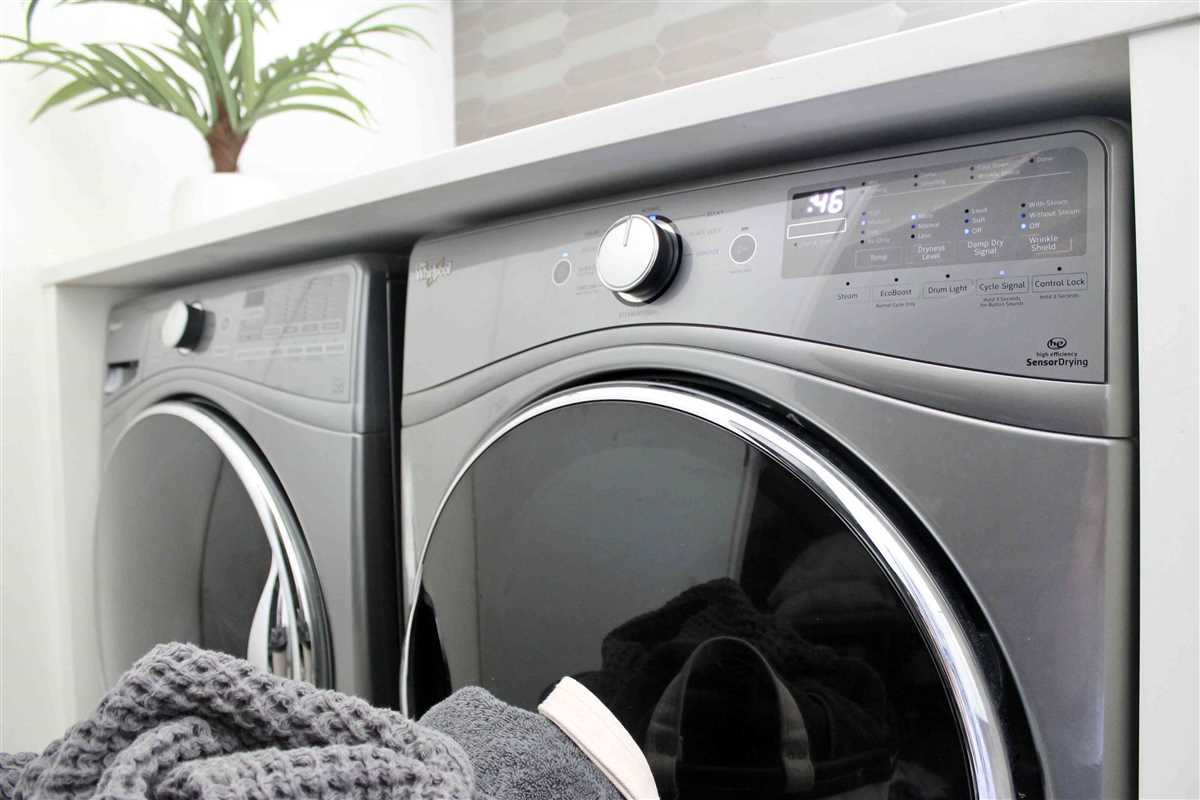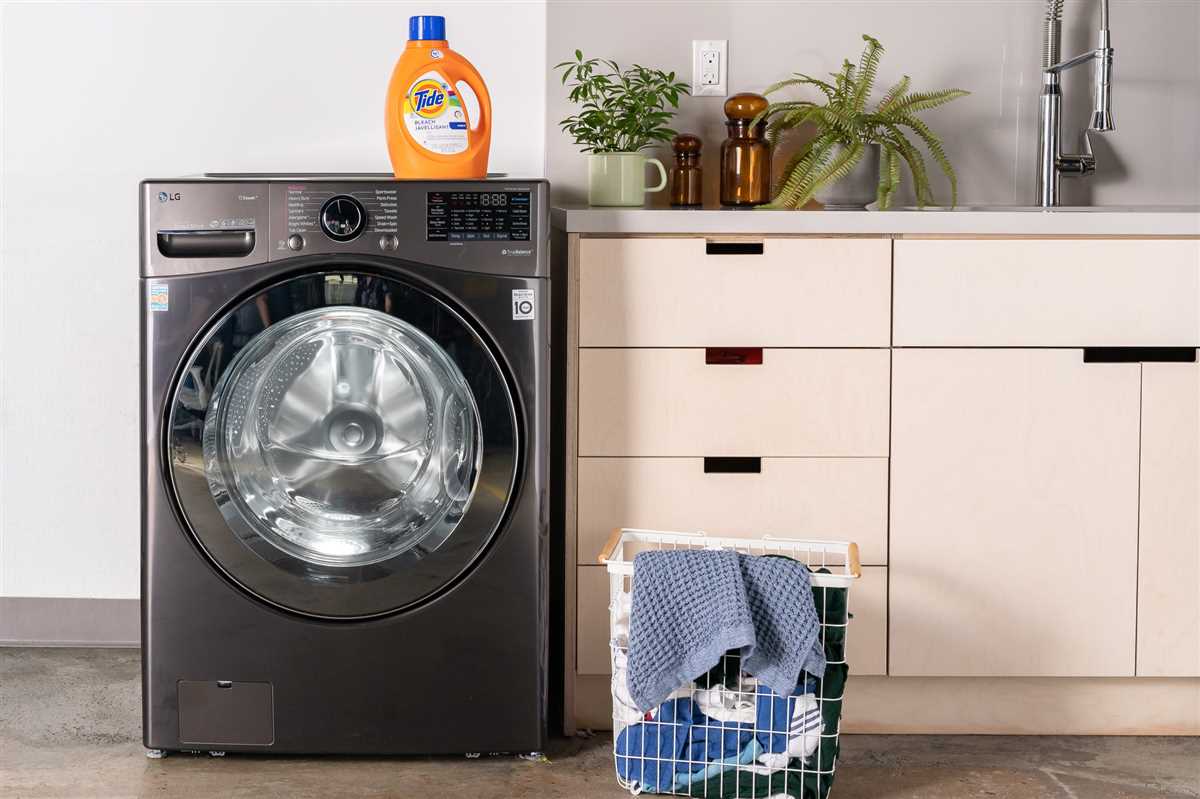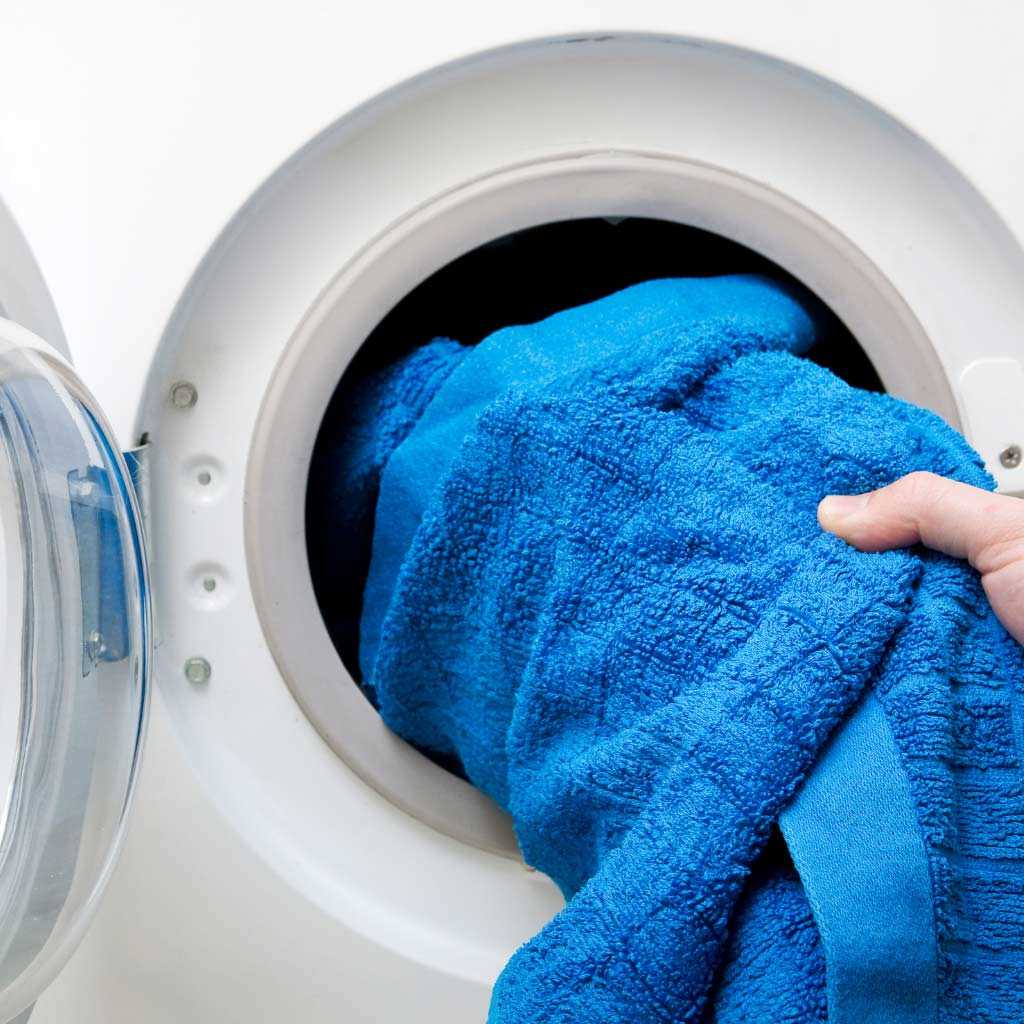




A tumble dryer is a convenient appliance that many households rely on to quickly and efficiently dry their laundry. However, there is often confusion about the term “capacity” when it comes to choosing the right tumble dryer. Does a tumble dryer’s capacity refer to wet or dry washing?
The capacity of a tumble dryer actually refers to the weight or volume of dry clothing that the appliance can accommodate. This means that when you see a tumble dryer with a capacity of, for example, 8 kilograms, it means that you can fit up to 8 kilograms of dry clothing in it. It is important to note that the weight of dry clothing is significantly less than the weight of wet clothing.
When wet clothes are placed in a tumble dryer, they undergo a process of evaporation, where moisture is removed and the clothes become dry. During this process, the weight of the clothing decreases. Therefore, it is not recommended to fill a tumble dryer to its full capacity with wet laundry, as this can lead to inefficient drying and potential damage to the appliance.
It is best to leave some space in the tumble dryer to allow for proper air circulation and efficient drying. This can also prevent the clothes from becoming too wrinkled. Keep in mind that overloading a tumble dryer with wet laundry can prolong the drying time and increase energy consumption.
So, when shopping for a tumble dryer, it is important to consider the capacity in terms of dry clothing. It is also worth noting that different fabrics and thicknesses of clothing may require different drying times. It is always a good idea to consult the manufacturer’s instructions and guidelines for optimal drying performance.
Does a Tumble Dryer’s Capacity Refer to Wet or Dry Washing? – Site Name
When shopping for a tumble dryer, one of the most important considerations is the capacity of the machine. But what exactly does the capacity refer to? Is it the amount of wet or dry washing that the dryer can handle?
The capacity of a tumble dryer usually refers to the weight of dry laundry that the machine can efficiently dry in a single load. This means that if the dryer has a capacity of 8 kg, it can effectively dry up to 8 kg of clothes that have been washed and spun in a washing machine to remove excess water.
It’s important to note that the weight of wet laundry is usually higher than the weight of dry laundry due to the absorption of water. For example, a load of wet laundry that weighs 10 kg may weigh only 7 kg once it’s been dried. Therefore, it’s essential to consider the capacity of the dryer based on the weight of dry laundry.
When choosing a tumble dryer, it’s advisable to select a machine with a capacity that suits your laundry needs. If you regularly have large loads of laundry, a dryer with a higher capacity would be more suitable. On the other hand, if you have smaller loads or live in a smaller household, a dryer with a lower capacity may be sufficient.
It’s also important to load the tumble dryer properly to ensure efficient drying. Overloading the machine can prevent the hot air from circulating effectively, resulting in longer drying times and potentially wrinkled garments. It’s advisable to leave some space in the drum for the air to circulate and to shake out larger items, such as duvets or coats, before placing them inside the dryer.
In conclusion, when considering the capacity of a tumble dryer, it’s the weight of dry laundry that the machine can handle. By understanding this, you can make an informed decision and select a dryer that suits your laundry needs.
Understanding Tumble Dryer Capacity and its Meaning
When it comes to purchasing a tumble dryer, it is important to understand the capacity and what it refers to. The capacity of a tumble dryer is a measurement of how much laundry it can hold. However, the capacity can be stated in either wet or dry weight, depending on the manufacturer.
It is essential to know whether the capacity refers to wet or dry laundry, as it can affect the amount of clothes you can dry in one cycle. If the capacity refers to wet weight, it means that the dryer can hold a certain amount of laundry when it is wet. On the other hand, if the capacity refers to dry weight, it means that the dryer can hold a specific amount of laundry that has already been dried.
In general, tumble dryer capacities are stated in kilograms or pounds. For example, a dryer may have a capacity of 7 kilograms or 15 pounds. It is important to check the manufacturer’s specifications or product description to determine whether the capacity refers to wet or dry laundry.
If the capacity refers to wet weight, keep in mind that the amount of laundry you can dry at one time may be less than the specified capacity. This is because clothes tend to weigh less when they are dry. For example, a dryer with a 7-kilogram wet capacity may only be able to hold 5 kilograms of dry laundry.
Understanding the capacity of a tumble dryer is crucial for efficient and effective drying. Overloading the dryer with too much laundry can result in longer drying times and poor drying performance. Conversely, underloading the dryer may waste energy and reduce its efficiency.
To determine the appropriate capacity for your needs, consider the size of your household and the amount of laundry you typically do. If you have a large family and do frequent laundry, a dryer with a larger capacity may be more suitable. However, if you have a smaller household and do less laundry, a dryer with a smaller capacity may suffice.
Additionally, it is worth considering the type of laundry you typically dry. Bulky items like towels and blankets may take up more space in the dryer compared to lightweight garments like t-shirts or socks.
In conclusion, understanding the capacity of a tumble dryer and whether it refers to wet or dry laundry is essential for efficient and effective drying. Make sure to check the manufacturer’s specifications or product description to determine the exact meaning of the capacity before making a purchasing decision.
Wet Washing Capacity Explained
When it comes to tumble dryers, understanding the term “capacity” can be confusing. Many people wonder whether the capacity of a tumble dryer refers to wet or dry washing. In this article, we will explain what “wet washing capacity” means and why it is important to consider.
What is Wet Washing Capacity?
The wet washing capacity of a tumble dryer refers to the amount of wet laundry that can be effectively dried in one cycle. It is measured in kilograms (kg) and indicates how much weight the dryer drum can handle when the laundry is wet.
Why is Wet Washing Capacity Important?
Understanding the wet washing capacity is crucial because it helps determine how much laundry you can dry at once. If you overload the dryer and exceed its wet washing capacity, the clothes may not dry properly. On the other hand, if you don’t utilize the full capacity of the dryer, you might be running it less efficiently.
By knowing the wet washing capacity, you can optimize your drying cycles. This means you can dry larger loads if your dryer has a higher capacity and avoid drying small loads if your dryer has a lower capacity. This can save you time, energy, and money in the long run.
Factors to Consider


When determining the wet washing capacity you need in a tumble dryer, there are a few factors to consider:
- Family Size: The larger the household, the more laundry you will have to dry. Consider the size of your family and the amount of laundry you typically wash to determine the appropriate wet washing capacity.
- Frequency of Use: If you do laundry frequently, you might benefit from a dryer with a larger wet washing capacity to accommodate multiple loads in a shorter time.
- Types of Fabric: Some fabrics, such as towels and heavy garments, may require more space to dry effectively. If you frequently dry heavy fabrics, consider choosing a tumble dryer with a larger wet washing capacity.
Conclusion

In conclusion, the wet washing capacity of a tumble dryer refers to the amount of wet laundry that can be dried in one cycle. Understanding this capacity is crucial for efficient drying and avoiding overloading or underutilizing the dryer. Consider factors such as family size, frequency of use, and types of fabric to determine the appropriate wet washing capacity for your needs. By doing so, you can optimize your drying cycles and save time and energy in the process.
Dry Washing Capacity Demystified

When you are shopping for a tumble dryer, one of the key specifications you may come across is the drum capacity. But what does this capacity actually refer to? Is it the weight of wet clothes that the dryer can hold, or the weight of dry clothes?
The capacity of a tumble dryer refers to the weight of dry clothes that it can hold. This means that if the dryer has a capacity of 8 kilograms, it can hold up to 8 kilograms of dry laundry.
It is important to remember that the actual capacity of a tumble dryer may vary depending on the type of fabric and the thickness of the clothes. Bulky items like towels and bedding may take up more space in the drum, reducing the amount of laundry that can be dried at once.
When loading your dryer, it is always best to leave some space for the clothes to move around and tumble freely. Overloading the dryer can lead to uneven drying and can even damage the machine.
Understanding Drum Capacity
Tumble dryers usually come in a range of capacities, from small compact models with capacities of around 4 kilograms, to large family-sized models with capacities of 10 kilograms or more.
Here are some common capacity sizes and what they mean in terms of laundry:
- 4 kilograms: Suitable for individuals or couples with light laundry loads. Can hold around 20 t-shirts or 2-3 pairs of jeans.
- 6 kilograms: Ideal for small families with light to medium laundry loads. Can hold around 30 t-shirts or 4-5 pairs of jeans.
- 8 kilograms: Suitable for families with medium-sized laundry loads. Can hold around 40 t-shirts or 6-7 pairs of jeans.
- 10 kilograms or more: Designed for large families or households with heavy laundry loads. Can hold around 50-60 t-shirts or 8-10 pairs of jeans.
It is worth noting that larger capacity dryers may also have additional features and drying programs to accommodate different types of fabrics and reduce energy consumption.
Tips for Using Your Tumble Dryer Efficiently

- Always check the care label on your clothes to determine whether they are suitable for tumble drying.
- Sort your laundry according to fabric type and drying requirements. Delicate items may require a lower heat setting, while towels and bedding may need a higher heat setting.
- Remove lint from the filter before each use to ensure proper airflow and efficient drying.
- Avoid overloading the dryer to ensure clothes have enough space to tumble freely and dry evenly.
- Consider using sensor drying technology, if available, which automatically adjusts the drying time based on the moisture levels in the drum. This can help save energy and prevent over-drying.
By understanding the dry washing capacity of your tumble dryer and following these tips, you can make the most of your appliance and ensure efficient and effective drying results every time.
Key Differences Between Wet and Dry Washing Capacities
Understanding the Difference
The capacity of a tumble dryer refers to the amount of laundry it can hold. However, there is a key difference between wet and dry washing capacities. It is essential to understand this difference as it will help you determine the appropriate load size for your dryer and ensure optimal performance.
Wet Washing Capacity
When we talk about wet washing capacity, it refers to the maximum weight of wet clothes that a tumble dryer can effectively and efficiently dry. This capacity is measured in kilograms (kg). Wet clothes are heavier due to the water content, and thus, the weight specified for wet washing capacity takes this into account.
Factors to Consider for Wet Washing Capacity
- The weight of the wet laundry should not exceed the specified capacity to prevent overloading the dryer. Overloading can affect drying efficiency and the overall performance of the dryer.
- The wet washing capacity is an important factor to consider when purchasing a tumble dryer, as it determines the load size you can effectively dry in one cycle.
Dry Washing Capacity
On the other hand, the dry washing capacity refers to the amount of dry clothes that the tumble dryer can accommodate. This capacity is also measured in kilograms (kg) but is based on the weight of the clothes after they are completely dry. Dry clothes weigh significantly less than wet clothes, so the dry washing capacity will be higher than the wet washing capacity for the same tumble dryer.
Importance of Dry Washing Capacity
- Knowing the dry washing capacity of your tumble dryer is crucial for ensuring that you do not overload it with dry clothes.
- By following the specified dry washing capacity, you can ensure efficient drying and prevent any damage to the dryer or clothes.
Summary
In summary, the wet washing capacity of a tumble dryer refers to the amount of wet laundry it can effectively dry, taking into consideration the weight of the clothes when wet. On the other hand, the dry washing capacity refers to the amount of dry clothes that the dryer can accommodate. Understanding these differences will help you make informed decisions about load size and ensure optimal drying performance from your tumble dryer.
Choosing the Right Tumble Dryer Capacity

When it comes to purchasing a tumble dryer, one of the most important considerations is the capacity. The capacity of a tumble dryer refers to the amount of laundry it can hold. However, there is some confusion among consumers as to whether the capacity refers to wet or dry washing. Let’s take a closer look at this aspect to help you choose the right tumble dryer capacity for your needs.
Understanding Tumble Dryer Capacity
The capacity of a tumble dryer is measured in kilograms (kg) and refers to the weight of the laundry it can effectively dry. It is important to note that this weight is based on dry clothes, not wet clothes. Therefore, if you see a tumble dryer with a 7kg capacity, it means it can dry a load of laundry that weighs up to 7kg when it is completely dry.
Determining Your Laundry Needs

When deciding on the right tumble dryer capacity for your needs, it is essential to consider the size of your household and the amount of laundry you regularly do. If you have a larger family and do frequent large loads of laundry, a tumble dryer with a higher capacity, such as 9kg or 10kg, would be more suitable. On the other hand, if you live alone or have a smaller household, a tumble dryer with a smaller capacity, such as 6kg or 7kg, may be sufficient.
Factors to Consider
Aside from the size of your household and the amount of laundry you do, there are a few other factors to consider when choosing the right tumble dryer capacity:
- The space available in your laundry area. Make sure to measure the space and choose a tumble dryer that fits comfortably.
- Your budget. Tumble dryers with larger capacities tend to be more expensive, so consider your budget when making a decision.
- Your energy efficiency preferences. Generally, smaller capacity tumble dryers are more energy-efficient and consume less energy.
Final Thoughts

Choosing the right tumble dryer capacity is an important decision to ensure that it meets your laundry needs effectively. Consider factors such as the size of your household, the amount of laundry you regularly do, the available space, your budget, and your energy efficiency preferences when making your choice. By taking these factors into account, you can select a tumble dryer that will make your laundry drying process more efficient and convenient.
FAQ
Does the capacity of a tumble dryer refer to wet or dry washing?
The capacity of a tumble dryer refers to wet washing. It is the amount of wet laundry that can be placed in the dryer at one time.
How can I determine the capacity of my tumble dryer?
You can determine the capacity of your tumble dryer by checking the manufacturer’s specifications or consulting the user manual. The capacity is often measured in kilograms and indicates the weight of wet laundry that the dryer can handle.
Should I fill the tumble dryer to its maximum capacity?
It is not recommended to fill the tumble dryer to its maximum capacity. Overloading the dryer can lead to poor drying results and can also cause excessive wear and tear on the machine. It is best to leave some space inside the drum for the clothes to tumble and dry properly.
What happens if I exceed the capacity of my tumble dryer?
If you exceed the capacity of your tumble dryer, the clothes may not dry properly. The excess of wet laundry can prevent hot air from circulating evenly and can lead to damp or undried clothes. It is important to follow the manufacturer’s guidelines for load size to ensure optimal drying performance and safety.
Is it possible to dry larger loads of laundry in a tumble dryer with a smaller capacity?
No, it is not advisable to dry larger loads of laundry in a tumble dryer with a smaller capacity. Overloading the machine can result in poor drying performance and can also put excessive strain on the dryer’s motor and other components. It is recommended to choose a tumble dryer with a capacity that matches your drying needs.
Does a tumble dryer’s capacity refer to wet or dry washing?
A tumble dryer’s capacity refers to the weight of wet washing that the machine can hold. This is because the machine needs to accommodate the moisture from the wet clothing and have enough space for the hot air to circulate for efficient drying.













